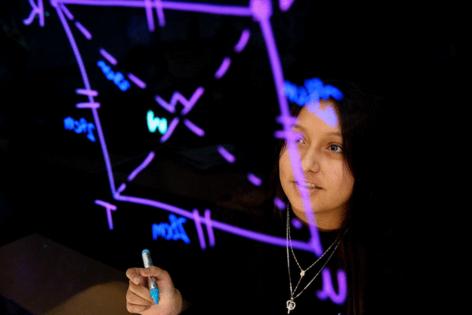Commentary: How Compton schools made a breakthrough in STEM education
Published in Op Eds
Reversing the disproportionately low representation of Black and Latino students in science, technology, engineering and math courses and careers is one of the most formidable challenges in education. The problem starts well before college because many students develop a fear of STEM early in their educational journeys.
Remarkably, Compton Unified School District appears to have identified a solution. Under the leadership of Darin Brawley, who became superintendent in 2012, the proportion of Compton students choosing STEM careers has soared to 51% from 24% over the last decade, according to district data.
This achievement is especially notable given the community’s challenges. Not so long ago, Compton endured excessive gang violence, the legacy of which still unfairly tarnishes the city’s reputation. The school district also had its troubles: In 1993, it was taken over by the state for financial and academic reasons, an intervention that’s more common in districts with a large nonwhite population. Compton has a reported 15% Black and 83% Latino student body.
Several factors explain the district’s success in motivating students to take — and excel in — STEM courses.
First, the district begins exposing students to STEM activities while they’re in preschool. Students in preschool programs begin to learn basic coding concepts even as they’re still playing with blocks. In kindergarten, they start building robots with Legos, and by first grade, some are participating in First Lego League robotics competitions.
Additionally, STEM topics have been integrated throughout schools’ curricula, including in social studies and English, so students see that their STEM knowledge can be applied to a variety of fields.
“I make it as creative and as relevant as possible for my students,” Trina Brown, a veteran math teacher at Whaley Middle School, told us. “If I’m making it about them, about how they learn and who they are, then they’re going to be more engaged with it.”
These approaches are used with all students in the district, not just a select few who have had to jump through academic hurdles.
The district’s strategy has also relied heavily on partnerships with companies, including Verizon, Boeing and Apple — and with nonprofits such as Heart of America — to show students how concepts they learn in the classroom can be applied to the real world and future careers. Unlike in some corporate partnerships, Compton is the driver and has been clear about the type of support the district needs.
“We see our role as making sure that students of color coming out of Compton have every ability they will need to participate in the global economy,” Supt. Brawley told us.
When we visited Compton in the spring, we saw genuine excitement in classrooms and other learning spaces. In one classroom at Whaley Middle School, to stimulate interest in aviation careers, students sat at cockpit controls at a bank of flight simulators guiding virtual planes. In another part of the noisy classroom, students flew drones through various obstacles, part of an effort to engage them in the booming drone industry.
Students work with 3D printers in the Verizon Innovative Learning Laboratory. At Compton Early College High School, seniors take college courses at Compton Community College and work with robots for a competition.
The district also offers e-sports in its schools, including at the elementary level. The activity has successfully engaged students and “has an intense educational value,” Brawley said, noting that when students play as a team, “they have to communicate and collaborate with each other, as well as be creative to defeat the team they are playing against.”
The enthusiasm of the students we met is the most compelling evidence of success. We talked to one senior with plans to attend the Savannah College of Art and Design and major in game design. Another was headed to UC Santa Cruz, where she’d like to double-major in marine biology and environmental science. A third was admitted to Cal State Long Beach, where he will study aerospace engineering. Like many of their Compton school district peers, they will be first-generation college students. Their example will pave the way for many others.
With supplemental funding and corporate partnerships, more districts with large Black and Latino populations can follow Compton’s example, integrating STEM early and across subjects, creating promising career opportunities.
Helping all kinds of students achieve success in STEM is a critical issue nationwide. Compton is showing how every student can have access to some of the most challenging, and prized, careers in the workforce today.
____
Pedro Noguera is the dean of the USC Rossier School of Education. Louis Freedberg is the interim chief executive of EdSource. They are host and executive producer, respectively, of the Sparking Equity podcast, where they produced two episodes on Compton.
©2024 Los Angeles Times. Visit at latimes.com. Distributed by Tribune Content Agency, LLC.




























































Comments